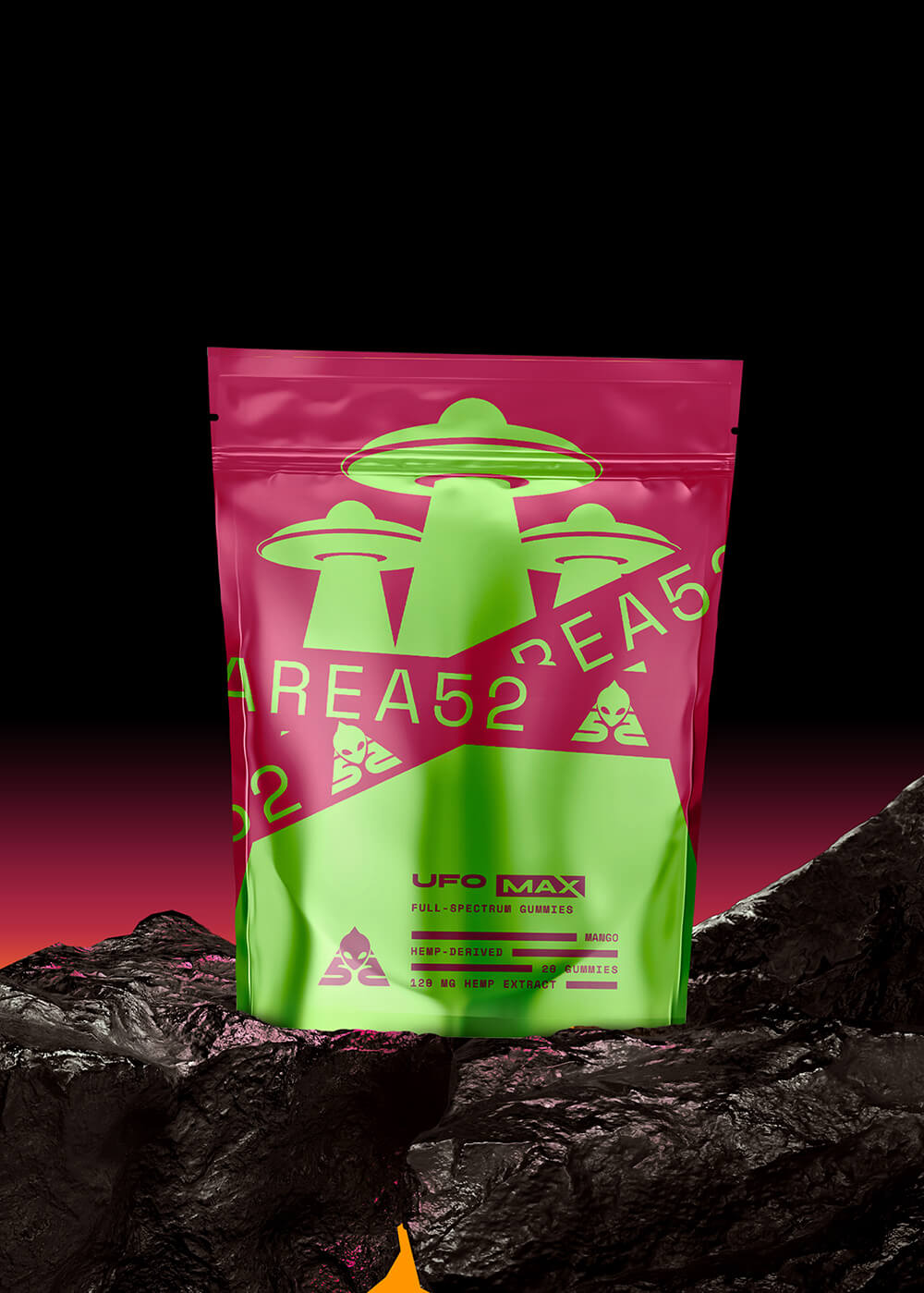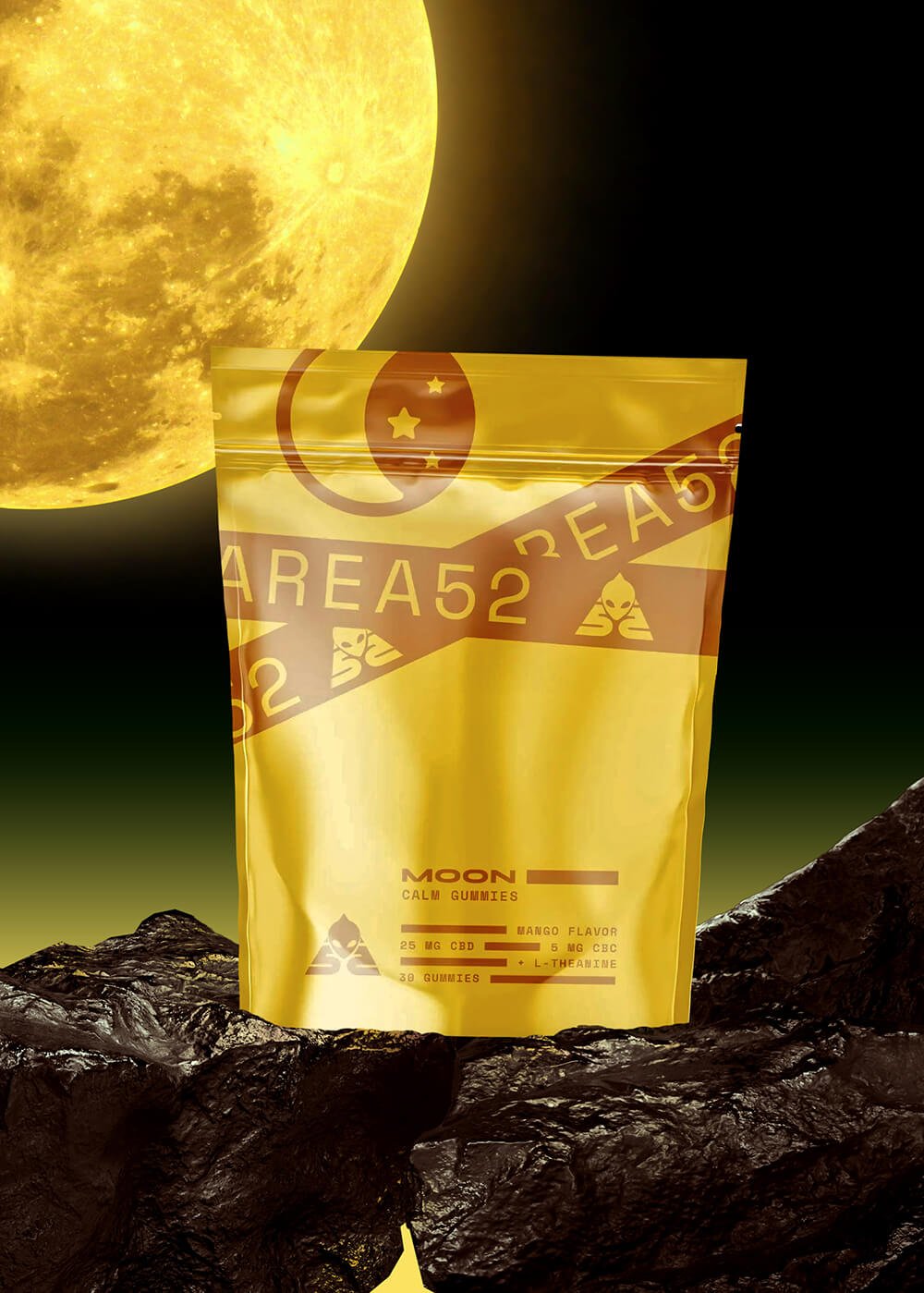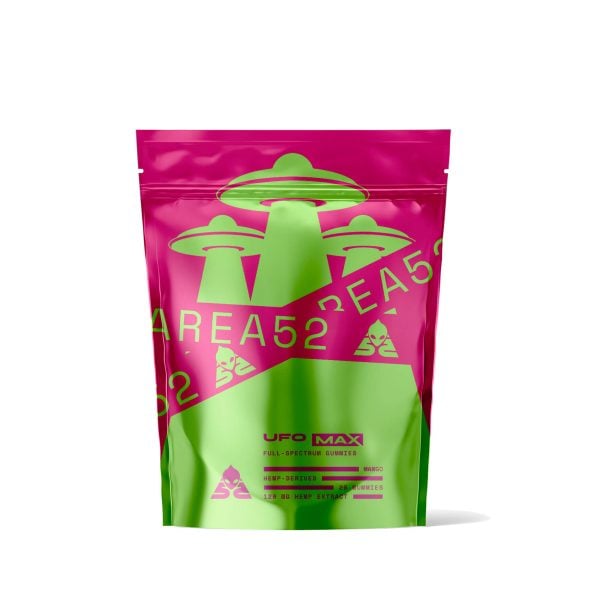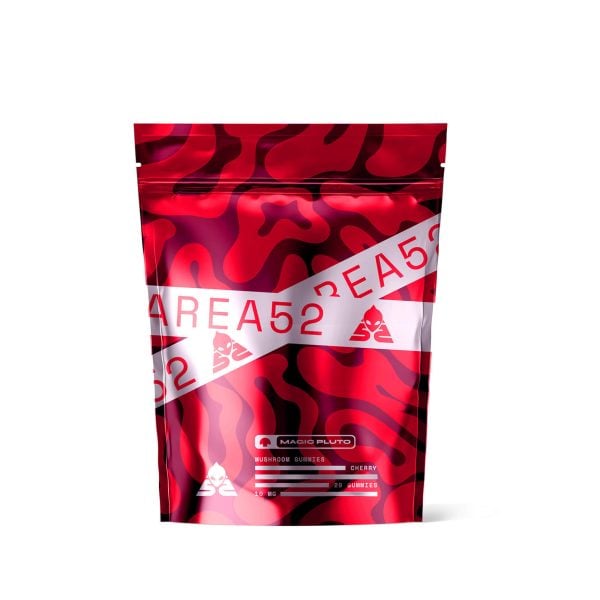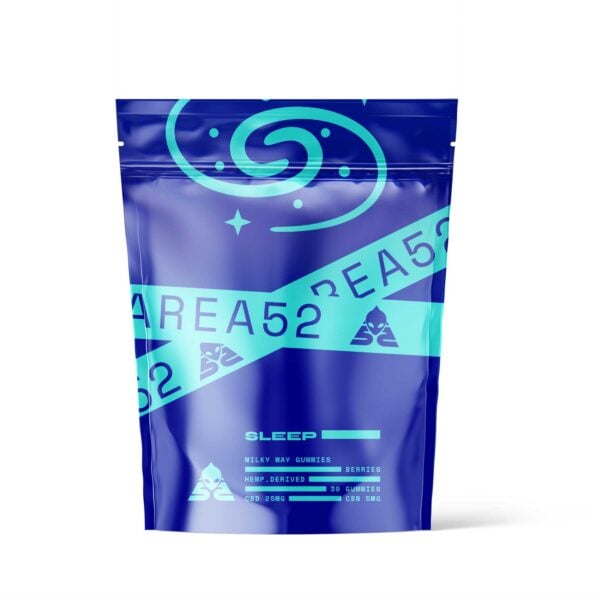Weed and Paranoia: Why Does Cannabis Give Me Anxiety?

Most people imagine ultimate relaxation and calmness when they think about the effects they expect marijuana — specifically delta 9 THC — to have. While this might be true for most individuals and probably people you know, your personal experience might include panic, anxiousness, and marijuana paranoia.
Below, you’ll find information about why weed, often labeled as an illicit drug, can have such disparate effects on users, why THC can cause anxiousness and fear, and what to do if a dose of THC has brought discomfort, paranoid thoughts, and negative feelings.
You’ll also find some tips for how to avoid anxiousness from weed altogether.
Does THC Make Everyone Anxious, Or Just Me?
Weed is known as a “chill out” drug for a reason; most users taking moderate doses report feelings of intense relaxation, euphoria, and mild sedation. When used responsibly and in moderation, most users don’t note feelings of anxiousness, paranoid fears, or irrational suspicion.
However, delta 9 THC can cause these unwanted side effects in any user based on a few factors.
A) Dose
More than anything, a hefty dose of THC is more likely to create uneasy, fearful, or anxious feelings in any user. Even users who have extensive experience with the drug have reported anxiousness and mild paranoia when consuming large quantities of THC. Extremely high intake can also raise concerns about marijuana induced paranoia and other adverse effects.
B) Delivery Method
The delivery method matters, in part because of the dose delivered but also because of how your body processes THC.
Smoking or vaping weed is the most common delivery method among users, but getting an accurate dose is challenging. If you’re very sensitive to THC, smoking may cause anxiousness or panic if the weed has a high THC content or if you take larger hits than you’re used to taking.
However, inhaling is a rapid delivery method, so it’s easy to stop and wait to see how it affects you before consuming more.
With that said, dabbing and smoking concentrates is one of the most likely methods to induce panic, anxious feelings, and fear. Concentrates are super potent and deliver high amounts of THC very quickly. Inexperienced users can very easily become overwhelmed by the resulting psychoactive experience and weed paranoia.
Edibles, gummies, and tinctures are a bit different because, while some of the THC might be absorbed directly into your bloodstream through capillaries in your mouth, most of it passes through your digestive system and gets processed by the liver. Most users report a more intense high from consuming THC edibles, which is more likely to lead to anxiousness and paranoia.
Do note that gummies take a while to kick in (around 30 minutes to two hours), so consuming too much too soon can increase the risk of negative effects, such as anxiety or fear, especially for inexperienced users.
C) Setting
The setting in which you are consuming cannabis or THC can also affect your experience significantly. We’re all most likely to be more comfortable with unfamiliar experiences like consuming THC if we’re in familiar places, like our homes. Taking THC in public or an unfamiliar area can put you at greater risk of experiencing paranoid thoughts, anxiousness and panic.
D) Other Cannabinoids
Finally, other cannabinoids can play a role in your experience. For example, if you consume delta 8 THC or cannabis with large amounts of CBN, CBD, or CBG, you’re generally less likely to experience adverse effects. Keep in mind that there is no guarantee, as everyone processes these cannabinoids differently.
How Does Weed Cause Anxiousness?
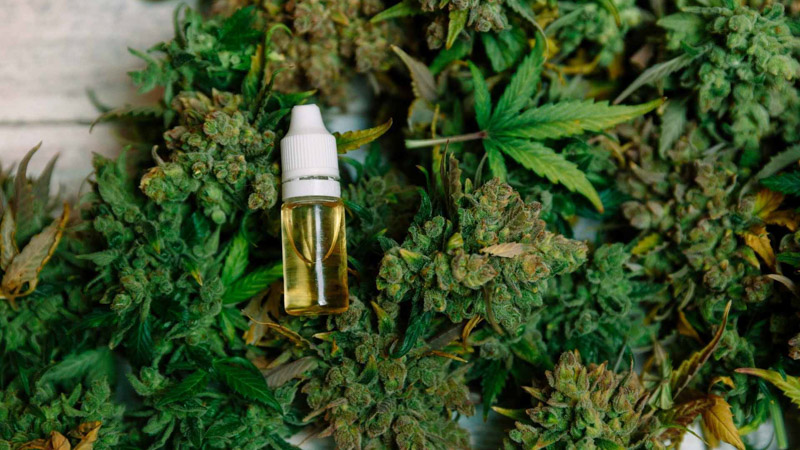
Like all other cannabinoids, delta 9 THC, known simply as “THC”, is a psychoactive compound that interacts with the body’s natural endocannabinoid system. This system of receptors and signaling pathways seems to regulate brain synapse activity and neurotransmitter levels as well as affect key cognitive mechanisms.
THC specifically binds with CB1 and CB2 receptors. It’s a partial agonist of the CB1 and CB2 receptors, meaning it binds to them and directly activates them. Other cannabinoids act as receptor antagonists, which means they attach to the receptors but don’t activate them. Experts maintain that the activation of these receptors by THC is what gives the drug its psychoactive properties.
CB1 receptors in the endocannabinoid system regulate brain synapse activity and signals traveling through the central nervous system. Two neurotransmitters that help control stress levels and anxiousness in general — GABA and glutamate — are inhibited when THC binds to CB1 receptors.
When GABA and glutamate levels are disrupted, neurons firing in your brain and signals moving through your central nervous system are also affected. Direct results of this include anxiousness, feelings of fear, paranoia, and unregulated stress.
It’s unclear why this disruption appears to create more extreme reactions in some THC users, but there are several factors at play that can determine how you’ll be affected by the drug.
1. Genetics
Your genetic makeup is an important factor when it comes to the impact THC will have on you. Researchers found that THC acts in the front and rear parts of your brain. For reasons unknown, if THC naturally acts more readily in the rear, you’re more likely to experience anxiousness and paranoia when consuming the drug.
2. Gender
Anecdotal reports and some research suggest that females are generally more susceptible to marijuana-induced anxiousness. It’s unclear whether the underlying cause is lower average body weight, a higher average BMI, or other related factors.
3. Dose
Cannabis is rarely ever used via intravenous administration, and most users consume it via smoking or vaping. No matter the method though, it’s always important to remember that proper dosing is an essential part of avoiding adverse side effects associated with THC. High doses are one of the primary causes of anxiousness, fear, and paranoia, especially in new or relatively inexperienced users.
4. Tolerance
Finally, your tolerance for THC plays a role in how likely you are to experience anxiousness or increased levels of stress when consuming it. Experienced users are better at processing THC, which means they’re less likely to feel the negative effects associated with large doses that could be overwhelming for others.
However, frequent cannabis use may also increase the risk of developing mental health issues like cannabis induced psychosis. This may also raise the likelihood of heightened substance abuse potential for some users.
What to Do If You Feel Anxious After Using Weed?
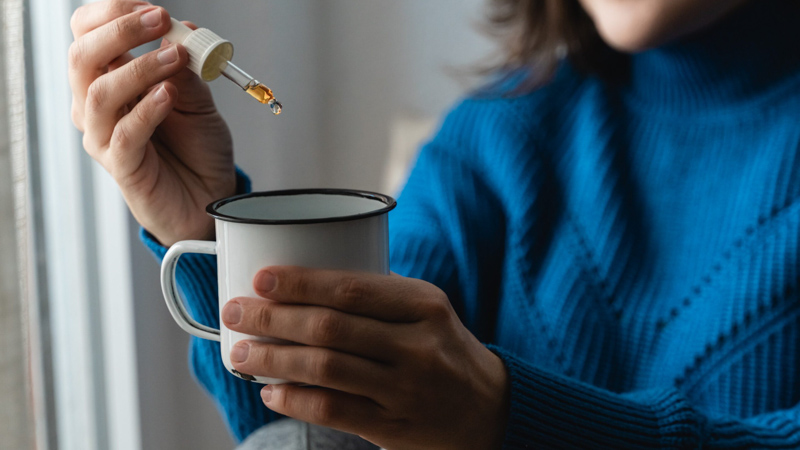
If you’ve taken too much THC and feel overwhelmed, anxious, panicked, paranoid, or fearful, it’s crucial to understand that there is no research to suggest that any amount of THC is lethal. Large doses might not be pleasant, but you’re unlikely to experience any lasting effects.
In addition to understanding that the feelings will pass, you can try the below tips for calming yourself down when you feel high.
1. Go Somewhere Familiar & Safe
One of the best things you can do is to get to a familiar place and get comfortable. Head to your bedroom or relatively small, enclosed room with no windows and a lockable door. This will help you feel safe and secure, and a familiar setting is crucial for limiting anxiousness. Feeling secure can mitigate acute psychosocial stress and help ease anxiety, so make yourself comfortable with a blanket and pillow if possible.
2. Listen to Music
Distractions are crucial for minimizing the negative feelings associated with taking too much THC. Countless THC users have reported that listening to music while high is more enthralling than usual, so putting on some tunes might be just the thing you need to limit your negative feelings.
3. Focus on Something Creative
Marijuana has long been touted as an herb that inspires creativity. You might be able to distract yourself from negative feelings by painting, writing music, sculpting, or engaging in something else creative.
4. Try Terpenes
Terpenes are the compounds in fruits, flowers, and other plant materials that give them their odor. More importantly, for your purposes, they have been known to alter the effects of THC, which could reduce feelings of anxiousness and paranoia. Smelling limonene (in lemons) or pinene and caryophyllene (in freshly ground black pepper) might help balance out your psychoactive experience and bring you out of an anxious state.
5. Take Cannabidiol (CBD)
Cannabidiol (CBD) is another cannabinoid that interacts with the endocannabinoid system. Specifically, it is a CB1 receptor antagonist and a partial CB2 agonist. CBD is a common cure for an overwhelming THC high because it’s an inverse agonist and is believed to reduce the possible impact of THC.
6. Make Some Tea
Making a cup of tea is a relaxing process for many people that distracts them from THC-induced anxiousness.
Some users have reported that chamomile, passionflower, peppermint, and green tea all have naturally relaxing effects that help calm you down and reduce anxious feelings. It’s best to stay away from black tea, as it contains more caffeine than herbal teas and could contribute to paranoia or anxiousness.
7. Go for a Walk
Finally, walking can sometimes be a pleasant and naturally relaxing experience for some THC users. It’s best to walk in a familiar place where you won’t feel threatened or fearful. Avoiding interaction with other people can help limit the anxiousness you feel until your adverse side effects dissipate.
How to Avoid THC-Induced Anxiousness?
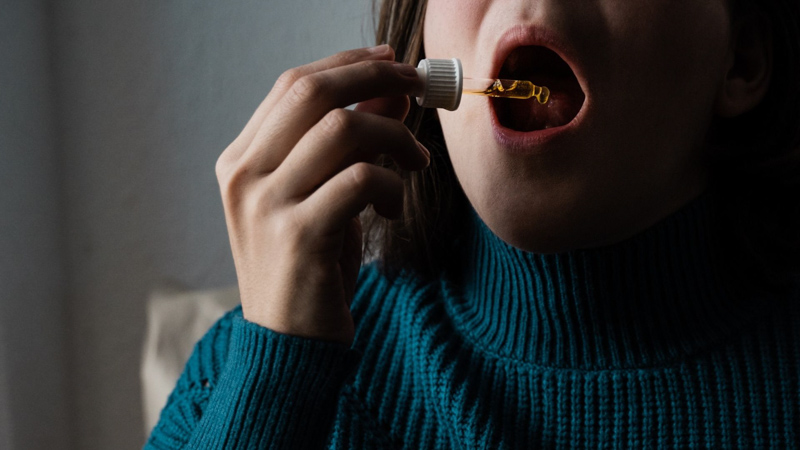
Avoiding anxiousness when taking THC is usually easier and more enjoyable than trying to deal with it once you’re already experiencing negative side effects. You can do several things to help reduce the risk of anxiousness, panic, and paranoia associated with THC.
Limit Your Dose
As mentioned above, larger doses of THC are more likely to cause unwanted side effects. The phrase “start low and go slow” should be taken to heart by all new and experienced THC users alike. When trying a new strain or delivery method, start with a minimal dose and wait until your next session to increase accordingly. If the first dose is not enough, you can always take more, but you can’t take less.
Try a High-CBD Strain
Many THC users find that strains high in CBD help balance out their psychoactive experience and minimize the risk of paranoia and anxiousness. As discussed above, CBD may counteract at least some of the effects of THC, helping to limit the inhibition of GABA and glutamate and the associated anxious feelings. Some high-CBD strains include Harlequin, ACDC, and Pennywise.
Try Delta 8 THC Instead
Many THC users switch to delta 8 THC, another natural cannabinoid estimated to be about half as potent as THC. As such, it’s significantly more difficult to accidentally get to a dose that pushes you beyond the pleasurable effects and into the unwanted side effects.
Delta 8 THC still delivers a psychoactive experience, but most users report reduced feelings of anxiousness, paranoia, and fear, even if they experience those side effects when using THC. Users also note delta 8 THC to be more relaxing, making it an excellent alternative to THC for many people.
Additionally, delta 8 THC is legal in most areas throughout the United States, even where recreational marijuana is illegal.
Try CBD Instead
Finally, if you’re using THC and finding it’s causing anxiousness, paranoia, or fear in the doses you need, you may want to consider switching to CBD.
CBD offers similar benefits but doesn’t cause any psychoactive experience, even in large doses. Users report feeling relaxed after consuming CBD, and there is no anecdotal evidence to suggest that it causes the same anxiousness or panic that THC can.
Learn more: Difference Between Delta 8 THC and CBD
Dealing With Cannabis & Mental Health
For people who struggle with mental health challenges, cannabis use might pose additional risks. Certain mental illness profiles can increase one’s vulnerability to cannabis induced psychosis or marijuana paranoia, especially during acute psychosocial stress.
According to studies in the Schizophrenia Bulletin, for example, individuals predisposed to certain mental health conditions can face increased risk of cannabis induced mental health issues.
In severe scenarios, especially if psychological factors like prior trauma exist, the risk of paranoia or negative effects may be elevated.
Still, moderate, well-managed THC consumption generally poses fewer pitfalls than heavy, reckless usage that amplifies negative feelings and heightens marijuana paranoia. Anyone concerned about mental health issues should talk with a medical professional before incorporating THC into their routine.
Despite the many benefits of cannabis though, stigma and misinformation still linger, adding to substance abuse fears and overshadowing the plant’s potential.
Wrapping Up: Why Weed Makes Some Anxious?
If marijuana makes you feel anxious, paranoid, fearful, or stressed, you’re not alone. While it’s a relaxing substance for most, cannabis use can bring on adverse side effects and even contribute to the worsening of mental illness and other mental health issues. THC binds to CB1 and CB2 receptors in your endocannabinoid system that can affect neuron and signal firing, leading to overwhelming experiences.
The best course of action to reduce anxiousness from weed is to get yourself into a comfortable and familiar place, distract yourself with music or some other activity, and consider trying CBD or making tea to calm yourself down.
Steps like monitoring dose size, choosing gentler strains, or employing cannabinoids like CBD can also help reduce the risk of adverse effects, including cannabis withdrawal syndrome.
To avoid cannabis anxiousness altogether, you can try delta 8 THC for a potentially more relaxing psychoactive experience, take CBD to attempt to ease pain or inflammation or to relax, try a high-CBD strain, or limit your THC dose altogether.
Frequently Asked Questions
1. Can marijuana cause paranoia or irrational suspicion of others?
Yes, some users experience weed paranoia, leading them to feel suspicious or fearful without logical cause. High doses or vulnerable mental health conditions can worsen these reactions.
2. Can marijuana induce paranoid schizophrenia?
There’s no evidence that cannabis directly causes schizophrenia, but frequent high-THC cannabis use may accelerate or reveal underlying conditions in susceptible people. Always consult a mental health professional if concerns arise.
3. What does marijuana psychosis look like?
Cannabis induced psychosis can involve severe delusions, hallucinations, or extreme paranoid thoughts. It’s rare but more likely in individuals with existing mental illness or a genetic predisposition.
4. What are the mental side effects of marijuana?
They can range from euphoria and relaxation to negative effects like anxiety, marijuana paranoia, or even short-term confusion. The outcomes vary widely based on factors like dose, strain, and user sensitivity.
5. How to stop paranoia?
If you feel overwhelmed by paranoid fears while high, try moving to a safe, calm setting, sip herbal tea, or distract yourself with music. Taking CBD can also help counter intense psychoactivity.
References Used
- Alger, B. E. (2013, November). Getting high on the endocannabinoid system. In Cerebrum: the Dana forum on brain science (Vol. 2013). Dana Foundation. [1]
- Katona, I., Rancz, E. A., Acsády, L., Ledent, C., Mackie, K., Hájos, N., & Freund, T. F. (2001). Distribution of CB1 cannabinoid receptors in the amygdala and their role in the control of GABAergic transmission. Journal of Neuroscience, 21(23), 9506-9518.
- Norris, C., Szkudlarek, H. J., Pereira, B., Rushlow, W., & Laviolette, S. R. (2019). The bivalent rewarding and aversive properties of Δ 9-tetrahydrocannabinol are mediated through dissociable opioid receptor substrates and neuronal modulation mechanisms in distinct striatal sub-regions. Scientific reports, 9(1), 1-14. [3]
- Noble, M. J., Hedberg, K., & Hendrickson, R. G. (2019). Acute cannabis toxicity. Clinical toxicology, 57(8), 735-742.
- Laprairie, R. B., Bagher, A. M., Kelly, M. E. M., & Denovan‐Wright, E. (2015). Cannabidiol is a negative allosteric modulator of the cannabinoid CB1 receptor. British journal of pharmacology, 172(20), 4790-4805.
- Thomas, A., Baillie, G. L., Phillips, A. M., Razdan, R. K., Ross, R. A., & Pertwee, R. G. (2007). Cannabidiol displays unexpectedly high potency as an antagonist of CB1 and CB2 receptor agonists in vitro. British journal of pharmacology, 150(5), 613-623.
